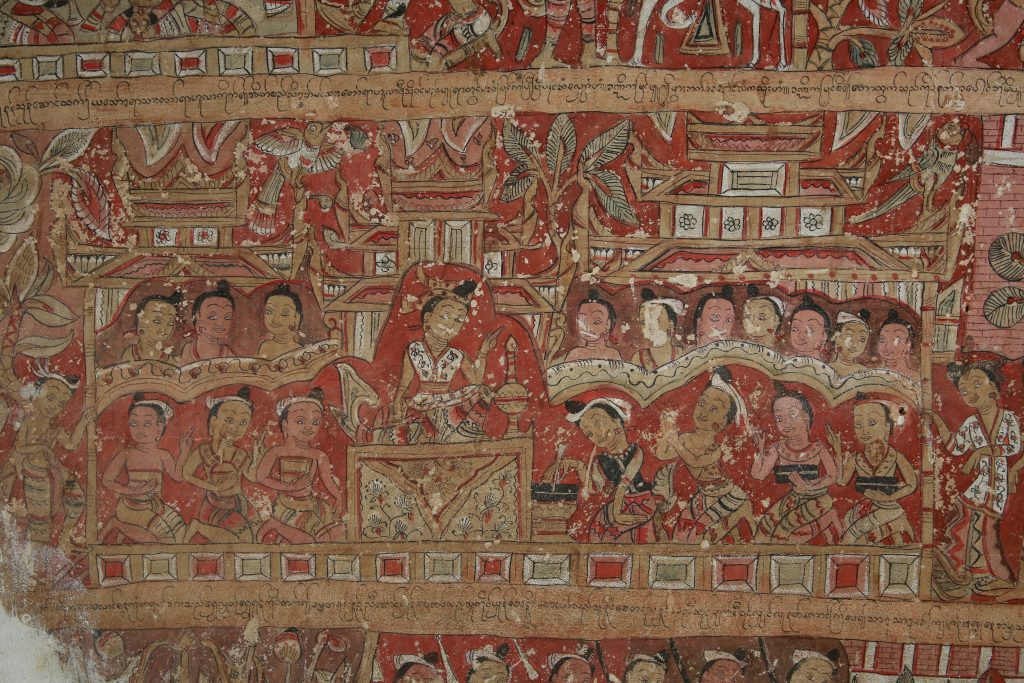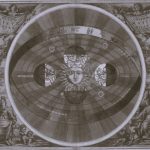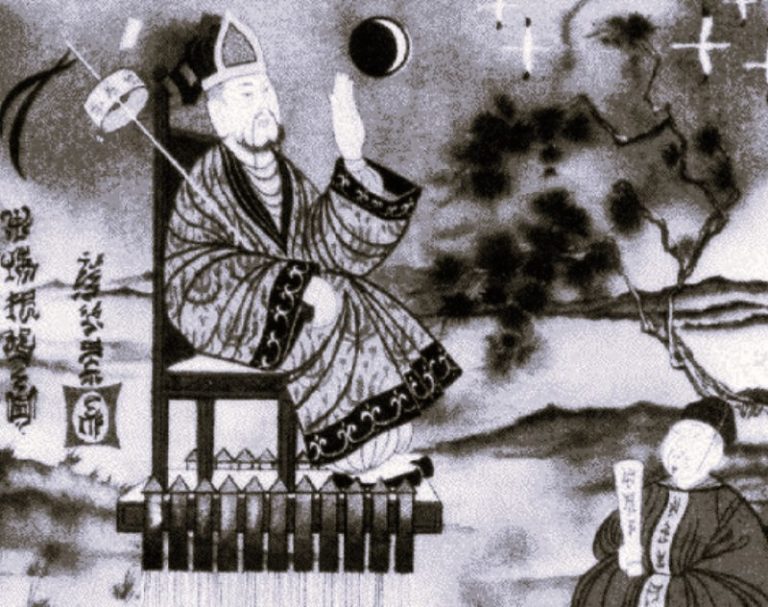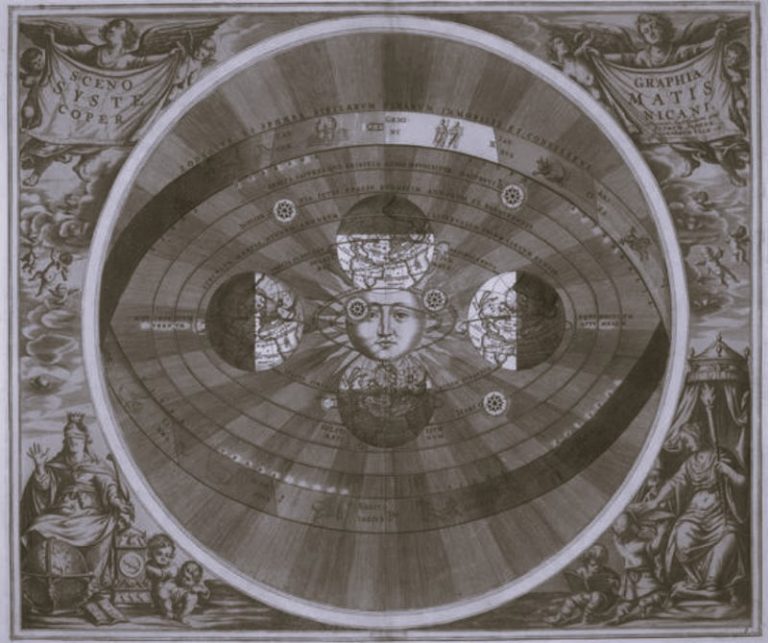


By Marylin Johnson Raisch, J.D.
Associate Director for Research and Collection Development
Georgetown University
Introduction
Religious Legal Systems
Religious law emanates from the sacred texts of religious traditions and in most cases purports to cover all aspects of life as a seamless part of devotional obligations to a transcendent, imminent, or deep philosophical reality, either personal or cosmological. Religion for law must be defined broadly, but its truth value needs not, and ought not, be addressed. Most religious law gradually came to apply in its most institutional form, and even then, only to its own organizations and to familial or contractual matters for its adherents. Application to ritual is a gray area but generally excluded from discussion and classification.
Religious law in this guide is seen as a branch of comparative law and legal study. Further, it is argued here that comparative law itself may most usefully be seen as part of the tradition of legal philosophy. Far from being wholly academic, however, comparative law is a practical approach in the service of 1) legal education 2) the appreciation of treaty implementation and 3) choice of law in the new world of public/private international law known as transnational law. At the conclusion of this guide to sources is a brief discussion of this approach to comparative law.
After the events of September 11, 2001, academic interest in Islamic law and countries governed by its principles as implemented along with secular positive law grew in an attempt both to understand the legal culture of middle eastern conflicts and to explore ways to address issues arising in multicultural jurisdictions with greater understanding. It is clear that in areas of private law such as family law, inheritance, and in come commercial transactions, several religious systems influence secular law or are incorporated as a regime which may or must be applied in those areas or to members of certain religious communities. As sources for legal research in these areas are inter-disciplinary and often less known in the world of legal research, an overview of the major world systems, and where and how they are implemented, is offered.
General Internet Sources
- Religion and the Law, a module from HeinOnline, contains a vast digitized library of canon law, Jewish law, Islamic law and old and new works on Hindu and Buddhist law as well as the history of religion and law (subscription required)
- Religion Law Commons (BePress), open access academic articles on all religious law
- Religion and Law Resource Consortium
- Internet Sacred Text Archive (older public domain texts)
- Religion Case Reporter (for U.S. cases) (subscription required)
- Global Legal Monitor, Law Library of Congress (topic: “religious … [varies]”, “Islamic law”; updates developments in the laws of many jurisdictions)
Constitutions, Sources of Texts
- Constitute Project (free, full-text constitutions with comparative text feature; see below)
- World Legal Information Institute (free, constitutions linked under jurisdictions)
- International Constitutional Law (free, provides taxonomy but not reliably updated)
- Constitution Finder, University of Richmond (free; still updated)
- CIA World Factbook (world constitutions only briefly listed with initial date under Government; information also on the type of legal system)
- World Constitutions Illustrated, HeinOnline (paid subscription database; best source of English translations and rich historic texts and secondary sources)
- Foreign Law Guide (paid subscription database; links to texts, situated in the context of materials for entire jurisdictions)
- JuriGlobe: World Legal Systems, University of Ottawa, maps; overview of all traditions in jurisdictions of the world however in this area exercise caution: information for the legal system of Israel indicates the application of Talmudic law. This is not actually the case; Israel is a secular state applying many kinds of religious law in certain areas for certain communities, only one of which is Jewish. Islamic and other religious law also may be an option for religious communities in Israel.
- Berkley Center for Religion and World Affairs at Georgetown University– The resources section of the center’s website includes sections on Traditions, and Topics. The links enable users to access scholarly summaries and key scriptural passages across five traditions [Buddhism, Christianity, Hinduism, Islam and Judaism]
- World Digital Library, (LOC, Alexandria Egypt)
- Famous World Trials, (trials of Jesus, Galileo, Salem witches)
- Harvard Pluralism Project: resources for demographics of religious traditions in U.S. and the world
- Church and State- AcademicInfo, Law and Legal Research: Law and Religion – U.S.-based site for links relating to church/state issue, Native American religious issues, and U.S. Supreme Court cases.
- British Academy (Humanities and Social Sciences)- includes religion as a topic under “search” and leads to the work of scholars.
- Oxford Bodleian Library now has guides for ancient law, Roman law and Islamic law at Oxford Libguides.
Comparative Law Treatises with Treatment of Religious Law
- Asal, Victor and Udi Sommer. Legal Path Dependence and the Long Arm of the Religious State: Sodomy Provisions and Gay Rights across Nations and over Time. Albany: State University of New York Press, 2016.
- Bussani, Mauro, ed. Cambridge Companion to Comparative Law. Cambridge, UK: Cambridge University Press, 2012.
- David, Rene and John E.C. Brierley. Major Legal Systems in the World Today: An Introduction to the Comparative Study of Law. 3rd ed. London: Stevens, 1996.
- Doe, Norman. Law and Religion in Europe: A Comparative Introduction. Oxford; New York: Oxford University Press, 2011.
- Düwell, Marcus et al. The Cambridge Handbook of Human Dignity: Interdisciplinary Perspectives. Cambridge, UK: Cambridge University Press, 2014. (global religious perspectives on human rights)
- Farrar, Salim and Ghena Krayem. Accommodating Muslims under Common Law: A Comparative Analysis. New York, NY: Routledge, 2017.
- Glenn, H. Patrick Legal traditions of the world: sustainable diversity in law. 5th ed. Oxford; New York: Oxford University Press, 2014.
- International Association of Legal Science. International Encyclopedia of Comparative Law. Tübingen: J.C.B. Mohr (Paul Siebeck); New York: Oceana, 1973- 1985.
- Menski, Werner. Comparative Law in a Global Context: The Legal Systems of Asia and Africa. 2nd ed. New York: Cambridge University Press, 2006.
- Palmer, Vernon Valentine, Mohamed Y. Mattar and Anna Koppel, eds. Mixed Legal Systems, East and West. Farnham, Surrey, England; Burlington, VT, USA: Ashgate, 2015.
- Redden, Kenneth R.; Brock, William Emerson. Modern Legal Systems Cyclopedia. Buffalo, N.Y., U.S.A.: W.S. Hein, 1984- (loose-leaf; 10 vols.); now available electronically via HeinOnline in World Constitutions Illustrated (subscription required).
- Rosenfeld, Michel and András Sajó, eds. The Oxford handbook of comparative constitutional law. Oxford, UK: Oxford University Press, 2012.
- Zweigert, Konrad, and Hein Kötz. Introduction to comparative law. 3rd rev. ed. Oxford: Clarendon Press; New York: Oxford University Press, 1998.
Comparative Law Journals, General and Religious Law Content
- The International and Comparative Law Quarterly, [London: British Institute of International and Comparative Law]. 1952- .
- International Journal of Constitutional Law: I•CON, [Oxford, UK: Oxford University Press], 2003-.
- Journal of Church & State. [Waco, Tex.: J.M. Dawson Studies in Church and State, Baylor University]. 1959- .
- The Journal of Comparative Law: JCL, [London: Wildy, Simmonds & Hill Pub.]. 2006-
- Journal of Law and Religion. [Hamline University School of Law, and: Council on Religion and Law]. 1983- .
- Oxford Journal of Law and Religion, Online ISSN 2047-0789. Currently freely available online with Oxford journals.
Islamic Law

Overview
According to the excellent outline provided by Irshad Abdal-Haqq in Islamic Law: An Overview of Its Origin and Elements, 7 J. Islamic L. & Culture 27 (2002) (Reprinted with author’s permission in the same journal from its first appearance in 1996), Islamic law might refer to all the law and jurisprudence of Islam and includes:
(1) the primary sources of law (Shari’ah)
Shari’ah has two main sources:
- the Qur’an and
- the Sunnah (traditions of Muhammad ibn Abdullah, the last prophet of Islam), which means
- the things he said, i.e. hadith,
- the way he lived his life, his conduct
and,
(2) the subordinate sources of law and the methods used to discover and apply the law (Islamic jurisprudence or fiqh), described by Mr. Abdal-Haqq as follows:
“While the principles and injunctions of the Shari’ah are infallible and not subject to amendment, fiqh-based standards may change according to the circumstances.”
Four methods, often called sources of law by Muslim writers, for deducing and establishing fiqh-based law are universally recognized by Islamic jurists.
- the extraction of Qur’anic injunctions and principles based on interpretations of it;
- the application of the principles reflected through the Hadith of Prophet Muhammad;
- the consensus of opinion from among the companions of Muhammad or the learned scholars (ijma);
- analogical deduction
Nineteen schools of fiqh (fiqh madhhabs) developed during the first four centuries of Islam. By the fall of Baghdad (in 1258 C.E. to the Mongols, that is- not to be confused with modern events) the number of major madhhabs had dwindled to five (four Sunni and one Shia). At present, the four major schools of fiqh among the Sunni Muslims are: (1) Hanafi, (2) Maliki, (3) Shafi’i, and (4) Hanbali. Among the shia, the Jafari School predominates.” (Abdal-Haqq, Islamic Law, supraat 36)
Judges also use individual judgment and reasoning, known as ijtihad (can include reasoning from analogy), but greatly varying over time. His excellent article goes on to distinguish each school or madhab by the relative importance each attaches to the authority of sources of law in on pages 67-75.
Finally, author Abdal-Haqq observes at pages 68-69,
“Currently, Saudi Arabia, Sudan, and Iran stand alone as those countries that fully recognize the Shari’ah as the official law of the land. Qatar, the two Yemens, Kuwait and Bahrain also acknowledge Shari’ah principles but to a lesser degree. All other legal systems in the Muslim world are hybrids of Islamic and European law.”
Internet Sources
- Center of Islamic and Middle Eastern Law, SOAS, U of London, with reading lists and links for study of Islamic law.
- Encyclopaedia of Islam, ed. Gudrun Krämer … [et al.]. 3d ed. Leiden; Boston: Brill, 2007-. Available electronically through Brill Online Reference Works.
- Harvard Islamic Legal Studies Program – note here the publications section. The program is developing a resource, SHARIASource, a database of texts with commentary, and has a blog up currently with reports of recent scholarship.
- Al-Islam.org, Ahlul Bayt Digital Islamic Library Project. Under “Laws and Worship” topic see sub-topic Islamic Laws. Sources place emphasis on the Twelver Shi’ah school.
- British AcademyPortal (British Academy for the humanities and social sciences) links to portals related to religion and Biblical studies. Search Law topic or Islamic law as a phrase.
- Oxford Bibliographies Online: Islamic Studies (subscription required)
- List of Islamic countries on World Legal Information Institute pages
- Muslim and mixed jurisdictions, World Legal systems, University of Ottawa
Qur’an at Internet Sacred Text Archive, and Hadith (Older Translations in the Public Domain) Books
- Nu’mn ibn Muammad, Ab anfah. The Disagreements of the Jurists: A Manual of Islamic Legal Theory Al-Q al-Nu’mn; ed and trans. Devin J. Stewart; volume editor, Joseph E. Lowry. New York; London: New York University Press, 2015.
- Abu-Odeh, Lama. Egypt’s New Constitution: The Islamist Difference, Constitutional Secularism in an Age of Religious Revival: The Challenges, (Oxford University Press forthcoming 2013).
- Al-Azem, Talal. Rule-Formulation and Binding Precedent in the Madhhab-Law Tradition: Ibn Qualubugha’s Commentary on the Compendium of Quduri. Leiden; Boston: Brill, 2016.
- Ali, Shadeen Sardar. Modern Challenges to Islamic Law. Cambridge, UK: Cambridge University Press, 2016.
- Bhala, Raj. Understanding Islamic Law (Shar’a). Durham, North Carolina: Carolina Academic Press, 2016.
- Farrar, Salim and Ghena Krayem. Accommodating Muslims under Common Law: a Comparative Analysis. Abingdon, Oxon; New York, NY: Routledge, 2017.
- Hallaq, Wael B. An Introduction to Islamic Law. Cambridge; New York: Cambridge University Press, 2009.
- Rabb, Intisar A. Doubt in Islamic Law: a History of Legal Maxims, Interpretation, and Islamic Criminal Law. New York: Cambridge University Press, 2015.
- Salaymeh, Lena. The Beginnings of Islamic Law: Late Antique Islamicate Legal Traditions. Cambridge, UK: Cambridge University Press, 2016.
- Shavit, Uriya. Shari’a and Muslim Minorities: the wasati and salafi Approaches to fiqh al-aqalliyyat al-Muslima. Oxford, UK: Oxford University Press, 2015.
- Zee, Machteld. Choosing Sharia?: multiculturalism, Islamic Fundamentalism and Sharia Councils. The Hague: Eleven International Publishing, 2016.
Journals
- Arab law quarterly. [London]: Lloyd’s of London Press, 1985.
- Islamic Law and Society, Leiden, the Netherlands: E.J. Brill, [1994- ].
- Journal of Islamic and comparative law. Zaria, Nigeria: Centre of Islamic Legal Studies, Faculty of Law, Ahmadu Bello University, 1967- .
- The journal of Islamic law. Takoma Park, Md.: Institute for Intercultural Relations, 2004- .
- Journal of Islamic law review. New Delhi: Serials Publications, 2005- .
- UCLA journal of Islamic and Near Eastern Law. Los Angeles, CA: UCLA School of Law, c2002- .
- Yearbook of Islamic and Middle Eastern law (published for the Centre of Islamic and Middle Eastern Law at the School of Oriental and African Studies, University of London). London; Boston: Kluwer Law International, 1995-
Jewish Law

Overview
“Jewish law is the legal system of the Jewish people as it has developed from Biblical times to the present.”
This definition by Phyllis Weisbrod in Basic books and periodicals on Jewish law: a guide for law librarians, 82 Law Libr. J. 519 (1990) summarizes a complex written, oral, and oral-as-written textual history of sources for Jewish law. Torah is the term used for the divine source of wisdom relating to all of creation, so to work towards a definition that relates to the narrower scope of its application as law, or halakhah, begins with the Torah in a more literal sense, namely, the first five books of what the Christian western tradition calls the Pentateuch or first five books of what came to be the Bible. While the status in Biblical and form-based criticism of the ancient compilers of this narrative is beyond the scope of this guide, an oral history of commentary on the Torah arose and became written down as the Mishnah in approximately the year 200. Talmud and Torah also contain non-legal teachings bound up with legend, myth and philosophy, referred to as aggadah.
Learned opinions based on this addition to the divine tradition were recorded as a commentary on the Mishnah and became known as the Talmud or “study”. The Jerusalem Talmud (or Gemarah in Aramaic) dates from the fifth century after Christ and approximately 100 years later there appeared the Babylonian Talmud, a more authoritative text. Other sources of the “oral” law include the Tosefta and the Midrashe Halakhah. After the fall of the Second Temple in 70 and the ending of the assembly of elders known as the Sanhedrin, interpretation fell to the institution of a bet din or rabbinical court of three rabbis. Such a court continued through the diaspora wherever there was a Jewish population. There is no appeal or stare decisis; one can ask the court to correct an erroneous judgment or re-open a criminal case. The tradition is much closer to that of the European civil law in that regard.
Codes of restatement also appeared over time; the codes of Moses Maimonides in the 12th century and of Joseph Karo in the 16th century are considered authoritative. As those rabbis learned in the law applied it in opinions, these became written down as answers and advice known as response, and these constitute a living law.
Archaeological research and scroll discoveries have also added to the wealth of study and potential sources for Jewish law. See Baumgarten, J. “The Laws of the Damascus Document in Current Research,” The Damascus Document Reconsidered (ed. M. Brosh). Jerusalem, 1992. In 1896, noted Talmud scholar and educator Solomon Schechter discovered evidence of sectarian Jewish documents which later were found to be medieval versions of the Damascus Document fifty years before the Qumran discoveries.
Internet Sources
- The Soncino Talmud [CD ROM electronic resource]. Chicago: Institute for Computers in Jewish Life; Davka Corp.; Judaica Press, 1991-1995.
- Jewish Virtual Library – Contains some texts, bibliography and an article on euthanasia from a Halachic perspective, (Neeman, Yaakov, and Eliot Sacks, Euthanasia: The Approach of the Courts in Israel and the Application of Jewish Law Principles, 2005).
- Jewish Encyclopedia entry
- Dafyomi site, the Talmud: Easily accessible English summary of the Talmud, for basic orientation through daily study, from The Ministry of Religion and Culture of the State of Israel, Estate Distribution Fund of the State of Israel, Dr. Lindsay and Rivki Rosenwald, Memorial Foundation for Jewish Culture.
- University of Miami Law Library, Jewish Law Research Guide. Excellent practical guide with research strategies for understanding the terms used in the Talmud and the Responsa and with regard to specific translations and sets.
- Hebrew Books, enables one to download in PDF acrobat format 11,000 Hebrew books on Jewish law.
- Seforim Online, enables one to download approximately 239 Hebrew seforim, many of which are rare or out-of-print.
- Tshuvos, enables one to download more than 100 Hebrew seforim.
- Cleveland State University Law School Judaic Law Research Guide.
- Bar Ilan Faculty of Law library.
- Jewish Encyclopedia entry.
- Judaica Electronic Texts: This site at University of Pennsylvania contains texts in several languages, notably Hebrew-English parallel Bible from the Masoretic text, and “Internet Resources for the Study of Judaism and Christianity.”
- Central Conference of American Rabbis, development of digital Responsa, (subscriptions available)
- Oxford Bibliographies Online: Jewish Studies (subscription required).
- Talmud Blog, blog of Israeli academics with many interesting links, including law as well as comparative sacred texts, such as Zoroasterian Avesta texts.
- Online Judaic Responsa Project, (requires guest registration and plug-in)
- Tikvah Center for Jewish Law & Civilization – located at NYU; working papers on Judaism and Jewish law.
- Tosefta Online with English translation.
Books and Commentary
- Abrams, Judith Z. The Babylonian Talmud: a topical guide. Lanham, Md.: University Press of America, 2002.
- Appel, Gersion. The Concise code of Jewish law: compiled from Kitzur Shulhan aruch and traditional sources: a new translation with introduction and halachic annotations based on contemporary response. 2 vols. New York: Ktav Pub. House, 1977- .
- Bleich, J. David. Jewish Law and Contemporary Issues. New York: Cambridge University Press, 2015.
- Cohen, Arnold J. An Introduction to Jewish Matrimonial Law. Jerusalem; New York: Feldheim, 2009.
- Cohen, Jack J. Judaism in a post-halakhic age. Boston: Academic Studies Press, 2010.
- Cohen, Jonathan, ed. Jewish law association studies. XIX:INTL BM520.52 .S54 2009.
- Cohen, Jonathan. Jewish commercial law: essays in memory of George Webber / edited by Jonathan Cohen. [Liverpool, UK]: Jewish Law Association, 2009.
- Elon, Menachem. Jewish Law: History, Sources, Principles = Ha-mishpat ha-Ivri. Trans. Ed. Muriel Berman; trans. Bernard Auerbach and Melvin J. Sykes. Philadelphia: Jewish Publication Society, 1994
- Fraade, Steven D. Legal fictions: studies of law and narrative in the discursive worlds of ancient Jewish sectarians and sages. Leiden; Boston: Brill, 2011.
- Ganzfried, Solomon ben Joseph, 1804-1886. Code of Jewish law = Kitzur shulhan aruh : a compilation of Jewish laws and customs / by Solomon Ganzfried ; translated by Hyman E. Goldin. Rev. ed. New York: Hebrew Pub. Co., 1961.
- Halberstam, Chaya. Law and Truth in Biblical and Rabbinic Literature. Bloomington, Ind.: Indiana University Press, 2010.
- Hayes, Christine, et al. Jewish law and its Interaction with other Legal Systems. New York: Jewish Law Association [Published and distributed by Deborah Charles Publications on behalf of the JLA], 2015. JLAS XXV.
- Hecht, Neil S. An introduction to the history and sources of Jewish law. Oxford: Clarendon Press; New York: Oxford University Press, 1996.
- Hempel, Charlotte. The laws of the Damascus document: sources, tradition, and redaction. Leiden; Boston: Brill, 1998.
- Hiers, Richard H. Justice and compassion in biblical law. New York: Continuum, 2009.
- Irshai, Ronit. Fertility and Jewish law: feminist perspectives on orthodox responsa literature. Trans. by Joel A. Linsider. Waltham, MA: Brandeis University Press, 2012.
- Levine, Aaron. Economic morality and Jewish law. New York: Oxford University Press, 2012.
- Neusner, Jacob. The rabbinic system: how the aggadah and the halakhah complement each other. Lanham, MD: University Press of America, 2012.
- Perlmutter, Rabbi Haim. Gemara Wisdom: Understanding the Ethics in Torah Law, Bava Metzia. Southfield, Mich.: Targum Press, 2009.
- Resnicoff, Steven H. Understanding Jewish law. New Providence, NJ: LexisNexis, 2012.
- Shemesh, Aharon. Halakha in the Making: The Development of Jewish Law from Qumran to the Rabbis. Berkeley, Cal.: University of California Press, 2009.
- Simon-Shoshan, Moshe. Stories of the law: narrative discourse and the construction of authority in the Mishnah. New York: Oxford University Press, 2012.
Journals
- Baruch, Chad and Karsten Lokken. Research of Jewish Law Issues: A Basic Guide and Bibliography for Students and Practitioners, 77 U. Det. Mercy L. Rev. 303 (2000).
- Hollander, David. Jewish Law for the Law Librarian, 98 Law Libr. J. 219 (2006).
- Hollander, David. Resources to Begin the Study of Jewish Law in Conservative Judaism, 105 Law Libr. J. 305 (2013).
- Sinai, Yuval, The Religious Perspective of the Judge’s Role in Talmudic Law, 25 J. Law & Rel. 357 (2009-2010).
- Symposium: Rethinking Robert Cover’s Nomos and Narrative: Rabbinic Legal Magic: A New Look at Honi’s Circle as the Construction of Law’s Space, 17 Yale J.L. & Human. 97 (2005).
- Weisbard, Phyllis Holman. Basic books and periodicals on Jewish law: a guide for law librarians. 82 Law Libr. J. 519 (1990).
Christian Canon Law (Roman Catholic Church)

Overview
The canon law of the Roman Catholic Church began to develop alongside Roman law and indigenous law in Europe after the end of the Roman Empire and the retreat of ancient Roman law. Gradually canon law and its Roman law elements would develop into a body of law that could challenge emerging monarchies to develop a coherent national law or the civil law code tradition of secular law in most of Europe today.
From the Catholic Encyclopedia online via New Advent (see link) we have the following definitions and description:
Canon law is the body of laws and regulations made by or adopted by ecclesiastical authority, for the government of the Christian organization and its members, but the expression “canon law” (jus canonicum) becomes current only about the beginning of the twelfth century, being used in contrast with the “civil law” (jus civile), and later we have the “Corpus juris canonici”, as we have the “Corpus juris Civilis”. Canon law is also called “ecclesiastical law” (jus ecclesiasticum); however, strictly speaking, there is a slight difference of meaning between the two expressions: canon law denotes in particular the law of the “Corpus Juris”, including the regulations borrowed from Roman law; whereas ecclesiastical law refers to all laws made by the ecclesiastical authorities as such, including those made after the compiling of the “Corpus Juris”.
By the twelfth century the mass of laws or canons were systematized and rationalized by canonist Gratian in the “decretals” or Concordance of Discordant Canons near the same time as the revived study of ancient Roman law began at the university at Bologna, but further work was done to create the decretals of Pope Gregory IX in 1234 and so by the end of the 13th century, the Corpus Iurus Canonici consisted of the following texts:
(1) the “Decretals” of Gregory IX;
(2) those of Boniface VIII (Sixth Book of the Decretals);
(3) those of Clement V (Clementinæ) i. e. the collections which at that time, with the “Decree” of Gratian, were taught and explained at the universities. (Catholic Encyclopedia online)
Ecumenical councils of the church, the Pope and Apostolic Letters such as bulls or briefs, decrees of the Roman Curia or Acts of the Holy See also form part of canon law.
The Roman Curia or departments of the Holy See consist of Roman Congregations, the tribunals, and the offices of Curia.
The Tribunals consist of the Sacred Penitentiaria, the Sacred Roman Rota, and the Apostolic Signatura. The Sacred Roman Rota consists of auditors who hear contentious cases and are doctors of canon law and theology. They take appeals from the episcopal tribunals of first instance or may be of the first instance for some matters. Cases may be criminal or regarding ordination or matrimony, involving a defender of the bond (of marriage). Advisory opinions may be requested as well. Conclusions of the court must be accompanied by reasons.
A common type of case in canon law relates to requests to grant an annulment of marriage after a civil divorce, since the doctrine of the Roman Catholic Church does not recognize divorce. It is a matter of controversy as to whether there have been in fact ecclesiastical “divorces” for influential persons or under experimental canons used in the United States before the latest Code of Canon Law, promulgated in 1983. The annulment concept came into secular law to void forced marriages and in several other instances, and in both religious and secular arenas, the court declares that no marriage ever existed and so it cannot be dissolved.
Internet Sources
- The Holy See (The Vatican)
- Papal Documents, Encyclicals listed by pope, in full text.
- Code of Canon Law (in English)
- Catechism, official acts, and the Code are archived in a Resource Library at the Holy See website.
- Roman Curia (Rota and tribunals)
- Canon Law Society of America, (CLSA) with an Online Bookstore where one may find
- Online index of Advisory Opinions
- Electronic Proceedings Index for many annual conventions of the CLSA starting in 1983 (Proceedings of the Canon Law Society of America or Proceedings of the Annual Convention).
- Links to sites of Canon Law faculties and societies of countries around the world
- Catholic Encyclopedia, from New Advent web site
- Medieval Sourcebook of Fordham University, older canon law sources
Books
- Primary: Code of Canon Law (1999) (reprinting the Latin text of the original 1983 Codex Iuris Canonici with some later official corrections and additions).
- Beal, John P., James A. Coriden, Thomas J. Green, eds. New Commentary on the Code of Canon Law. New York: Paulist Press, 2000.
- Brundage, James A. Medieval Canon Law. London/New York: Longman, 1995.
- Cartabia, Marta and Andrea Simoncini, eds. Pope Benedict XVI’s Legal Thought: a Dialogue on the Foundation of Law. New York, NY: Cambridge University Press, 2015.
- Coughlin, John J. Canon Law: A Comparative Study with Anglo-American Legal Theory. New York: Oxford University Press, 2011.
- Orsy, Ladislas M. Receiving the Council: Theological and Canonical Insights and Debates. Collegeville, Minn.: Liturgical Press, 2009.
- Helmholz, R.H. The Spirit of the Classical Canon Law. Athens, Georgia: University of Georgia Press, 1996.
- Noonan, John T. et al. Canons and Canonists in Context. Goldbach: Keip, 1997. Rolker, Christof. Canon law and the letters of Ivo of Chartres. Cambridge, Cambridge University Press, 2010.
- Witte, John Jr. From Sacrament to Contract: Marriage, Religion and Law in the Western Tradition, Louisville: Westminster John Knox Press, 1997.
Journals
- The Bulletin of Medieval Canon Law (Berkeley Institute of Research and Study in Medieval Canon Law), Washington, DC: Catholic University of America Press, 1971- .
- Journal of Catholic Legal Studies, Jamaica, N.Y.: St. John’s University School of Law, 2005- .
- The Jurist: Studies in Church Law and Ministry, Washington, DC: Catholic University of America Press, 1941- .
- Jones, Timothy Willem, Sin, Silence and States of Denial: Canon Law and the ‘Discovery’ of Child Sexual Abuse 41 Australian Feminist Law Journal 237 (2015).
- Landau, Peter. “Aequitas’ in the “Corpus Iuris Canonici‘, 20 Syracuse J. Int’l L. & Com. 95(1994).
- Orsy, Ladislas S.J. Propter Honoris Respectum: Stability and Development in Canon Law and The Case of “Definitive” Teaching, 76 Notre Dame L. Rev. 865 (2001).
- Raisch, Marylin J. Raisch, Codes and Hypertext: The Intertextuality of International and Comparative Law, 35 Syracuse J. Int’l L. & Com. 309-339 (2008).
- Review Essay: In the Steps of Gratian: Writing the History of Canon Law in the 1990’s, 48 Emory L.J. 647 (1999).
- Young, Stephen and Alson Shea, Separating State from Church: A Research Guide to the Law of the Vatican City State 99 Law Libr. J., 589,-610 (2007).
Hindu Law

Overview
From an ancient time, 2000-1500 B.C., the Vedic literature existed, and while it informs a tradition of gods, the literature points to the concept of the One as interpreted by the Brahmans, these teachers also used the sutras or memorized books (like textbooks) of law or dharma (in one of its meanings; closer to “way of life”).
The Laws of Manu, a mythical author, of circa 200 B.C. shows the beginnings of the legal tradition of great variety although his focus was family, property, and succession law. This early Sanskrit literature was replaced gradually in the colonial period when the British substituted their own translations and understanding in place of what came before; Anglo-Indian law preserved family law areas (five elements of family law-marriage, child marriage, polygamy, divorce, and maintenance) as Hindu personal law and replaced the rest with colonial British law. It was a judge made law. The Hindu Code of independence became one among other personal codes and preserved much of the British innovation. Custom and local tradition could prevail over sacred texts even in the time of classical Indian law.According to the Laws of Manu, there are four sources of dharma: 1) the Vedas, 2) tradition, especially as set forth in treatises like Dharmasastras, 3) customary laws created by local or regional communities, and 4) personal preference.
The important post-colonial acts of Parliament for the Hindu Code include: the Hindu Marriage Act No. XXV of 1955, Hindu Code (1955); the Hindu Adoptions and Maintenance Act 78 of 1956, Hindu Code (1956); the Hindu Minority and Guardianship Act No. 32 of 1956, Hindu Code (1956); the Hindu Succession Act No. XXX of 1956, Hindu Code (1956); and the Hindu Succession (Amendment) Act No. XXXIX of 2005.
Internet
- Internet Sacred Text Archive for the Vedas and Laws of Manu (older translations only).
Books and Commentary
- Davis, Jr., Donald R. The spirit of Hindu law. Cambridge, Cambridge University Press, 2010.
- Hiltebeitel, Alf. Dharma: Its Early History in Law, Religion, and Narrative. Oxford, UK; New York: Oxford University Press, 2011 (explores Buddhist and Brahmanical ideas of dharma in Indian texts from 300 BC to AD 200). Also listed below for Buddhism.
- Holden, Livia. Hindu Divorce: A Legal Anthropology (Aldershot: Ashgate, 2008).
- Lubin, Timothy; Davis, Donald R.; Krishnan, Jayanth K., eds. Hinduism and Law: An Introduction. New York: Cambridge University Press, 2010.
- Tabasum, Mufti Samiya. Hindu Law. New Delhi: Satyam Law International, 2015.
Journals
- Garg, Sampak P. Law and Religion: The Divorce Systems of India, 6 Tulsa J. Comp. & Int’l L. 1 (1998).
- Leubsdorf, John. Symposium: Gandhi’s Legal Ethics, 51 Rutgers L. Rev. 923 (1999).
- Seshagiri Rao, K.L. Symposium: The Relevance of Religion to a Lawyer’s Work: An Interfaith Conference: The Theological Perspective: Practitioners of Hindu Law: Ancient and Modern, 66 Fordham L. Rev. 1185 (1998).
Buddhist Law and Legal Theory

Overview
Tibet 1940-1959 is the most illustrative jurisdiction for an examination of what followers of the Buddha in an authentic Buddhist culture regard as the source of laws and rules that govern a monastically inclined community as well as householders’ obligations.
According to Rebecca French,
“There are five major sources for Tibetan legal concepts: (1) religious source material such as the Vinaya which is a canonical text outlining the rules for the monks to follow as Buddha spoke them case by case; (2) Extant official documents which include administrative law books, edicts, decision documents, treatises, government contracts, estate record books, tax records and deeds to land; (3) documents issued by non-governmental institutions such as monastic constitutions, private leases and private contract documents; (4) law codes; and (5) written and oral statements describing the legal system.” The Case of the Missing Discipline: Finding Buddhist Legal Studies52 Buffalo L. Rev. 679, 682-684, fn 4.
Dhammasattha is the Pali term for the genre of legal literature which may be examined in relationship to householders and communities or sanghas used by such communities in Laos, Myanmar (Burma) and Thailand and this literature probably dates from the first millennium. Courts of law in colonial times used “Acts of Truth” in Sri Lanka’s Sinhala Buddhist community for proof in judicial proceedings. These were oaths taken upon consequences to be observed as between truth-tellers and others. In Thailand, legal proceedings that replace informal “injury narratives” in tort cases (or events which may or may not result in a case) appear less effective in resolution of claims than the traditional methods under Buddhist obligations (see Engel article cited below). These exercises in legal history and anthropology bear on modern developments in criminal law and restorative justice as well.
Internet
- Internet Sacred Text Archive, Buddhist literature and sutras
Books and Commentary
- French, Rebecca Redwood and Mark A. Nathan, eds. Buddhism and Law: An Introduction. New York, NY: Cambridge University Press, 2014.
- French, Rebecca Redwood. “Daughters of the Buddha: The Sakyadhita Movement, Buddhist Law and the Position of Buddhist Nuns” in Feminism, Law and Religion, Marie A. Failinger, Elizabeth R. Schiltz, and Susan J. Stabile, eds. Farnham, UK: Ashgate, 2013.
- French, Rebecca. The Golden Yoke. The Legal Cosmology of Buddhist Tibet. Ithaca and London: Cornell University Press, 1995.
- Meinert, Carmen and Hans-Bernd Zöllner, eds. Buddhist approaches to human rights: dissonances and resonances. Bielefeld: Transcript; New Brunswick (U.S.A.: Distributed in North America by Transaction Publishers, 2010.
- Schonthal, Benjamin. Buddhism, politics and the limits of law: the pyrrhic constitutionalism of Sri Lanka. New York: Cambridge University Press, 2016.
Journals
- Buddhism, Law & Society. Getzville, New York: William S. Hein & Co., Inc., 2016- . This is a new journal published by W.H. Hein, Inc.
- Crouch, Melissa. Promiscuity, Polygyny, and the Power of Revenge: The Past and Future of Burmese Buddhist Law in Myanmar, 3 Asian J. Law & Soc’y 85 (2016).
- Huxley, Andrew. Symposium: Law, Religion, And Identity: Positivists and Buddhists: The Rise and Fall of Anglo-Burmese Ecclesiastical Law, 2001, 26 Law & Soc. Inquiry 113 (2001).
- Whitecross, Richard W. Separation of Religion and Law: Buddhism, Secularism and the Constitution of Bhutan, 55 Buff. L. Rev. 707 (2007-2008).
- Zan, Myint. A Comparison of the First and Fiftieth Year of Independent Burma’s Law Reports, 35 Victoria U. Wellington L. Rev. 385 (2004).
- Of Consummation, Matrimonial Promises, Fault, and Parallel Wives: the Role of Original Texts, Interpretation, Ideology and Policy in Pre-and Post-1962 Burmese Case Law, 14 Colum. J. Asian L. 153 (2000).
Confucian Law and Legal Theory

Overview
The teachings of K’ung-tzu (older form Kong fou-tseu) known in the west as Confucius bear on the informal legal tradition of the Chinese jurisdictions where the rite and custom of persuasive example or lihas been an alternative even within that culture to legalistic codes or more positive law (fa). Penal and administrative law has been more prominent than any private law and so the influence as of other religious systems on family law or obligations is not seen in the positive law. Confucianism is often seen as a philosophy and not a religion, but it is included here as a basis for law as a means of social control and reinforcing roles, similar in some ways to ancient Roman law.
Research for western legal scholars is dependent upon scholarship in a difficult language transliterated differently over the years using Wade-Giles or pinyin systems. As a guide, these textual problems are described as quoted below from an article by Janet E. Ainsworth, Interpreting Sacred Texts: Preliminary Reflections on Constitutional Discourse in China, 43 Hastings L.J. 273 (1992):
“The Confucian Classics are a collection of writings said to date from the late Chou Dynasty (1122 – 221 B.C.). In accord with the Chinese cultural penchant for enumeration, they are referred to as either the Five Classics or the Six Classics. Some years later, certain scholars claimed to have discovered surviving copies of the Classics which had ostensibly escaped the Ch’in burning decree — texts written using the ancient style characters of the Chou Dynasty. For a brief time, the two rival sets of texts, the “New Texts” (chin wen) in contemporary Han Dynasty script and the “Old Texts” (ku wen) in ancient script, vied for dominance among Confucian scholars. By the closing years of the Han Dynasty, however, the Old Text versions of the Classics prevailed over the New Texts. Nevertheless, the episode of the book-burning shaped the Confucian attitude towards the Classics, fueling a perpetual insecurity that the canon which survived was in some way defective or incomplete. That fear was to provide the justification for revising and reconstructing the canon throughout Chinese history.
Classical scholars over the centuries felt free to propose additions or deletions to the Confucian canon. The Book of Rites, for example, was originally supposed to have contained 204 chapters. Later scholars whittled it down to eighty-five, then to forty-nine chapters. Confucius himself provided a precedent for such wholesale revision of the classical texts, in that he traditionally was credited with excising major portions of the Book of Poetry, and perhaps the Book of Documents as well. Many of the articles below also consider the influence of the Tao, another major philosophical and ritual influence on society and legal thinking.
The contestability of the classical Confucian texts was to have dramatic political consequences in late imperial China. During the late Ming Dynasty (1368 – 1644), using sophisticated philological techniques, these scholars exposed a number of these classical texts as forgeries. They therefore advocated going back to the so-called New Text versions of the Classics, which Han Dynasty scholars had reconstructed from memory.” pp. 286-290
Internet
- Internet Sacred Text Archive, Confucian “classics” in older translations, of the “Canon”, Analects, and many other documents.
- Ho, Norman. The Legal Philosophy of Zhu Xi (朱熹) (1130-1200) and Neo-Confucianism’s Possible Contributions to Modern Chinese Legal Reform
Books and Commentary
- Chang, Wejen. In Search of the Way: Legal Philosophy of the Classic Chinese Thinkers. Edinburgh: Edinburgh University Press, 2016.
- Liu, Y., Origins of Chinese Law: Penal and Administrative Law in its Early Development. Hong Kong: Oxford: New York: Oxford University Press, 1998.
- MacCormack G. The Spirit of Traditional Chinese Law. Athens, Ga.: University of Georgia Press, 1996.
- McAleavy, H., “Chinese Law” in J. Derrett, An Introduction to Legal Systems. London: Sweet & Maxwell, 1968 at 65.
- Ren, X., Tradition of the Law and Law of the Tradition: Law, State, and Social Control in China. Westport CT: Greenwood Press, 1997.
- Yand, C. K. Religion in Chinese Society, Berkeley: University of California Press, 1961.
- Zhao, Bo. Legal Principles and Chinese Law: A Philosophical Investigation. The Hague: Boom Juridische Uitgevers, 2009.
Journals
- Chuanhui, Zeng. Coalition and Hegemony: Religion’s Role in the Progress of Modernization in Reformed China, 2011 BYU L. Rev. 759 (2011).
- Fang, Quiang and Roger Des Forges. Were Chinese Rulers above the Law – Toward a Theory of the Rule of Law in China from Early Times to 1949 CE, 44 Stan. J. Int’l L. 101 (2008).
- Deng, Feng. Corrective Justice in the Confucian Legal Tradition: A Nonexistent Concept, [2013], Cornell Law School Clarke Program, conference paper, available here.
- Li, Weng, Philosophical Influences on Contemporary Chinese Law, 6 IND. INT’L & COMP. L. REV 327 (1996).
- Park, S. Thinking with Chinese Cases: Crime, Law, and Confucian Justice in Korean Case Literature, 53 Korea Journal 5 (2013).
- Waha, Carolyn R. The Teachings of Confucius: A Basis and Justification for Alternative Non-Military Civilian Service, 2 Rutgers J. Law & Relig. 3 (2000/2001)
- Wong, Bobby K.Y. Traditional Chinese Philosophy and Dispute Resolution, 2000, 30 Hong Kong L.J. 304
- Winfield, Betty H. Takeya Mizuno and Christopher E. Beaudoin. Confucianism, Collectivism and Constitutions: Press Systems in China and Japan, 5 Comm. L. & Pol’y 323 (2000).
Published by Internet Archive, 07.2009, under the terms of a Creative Commons license.






